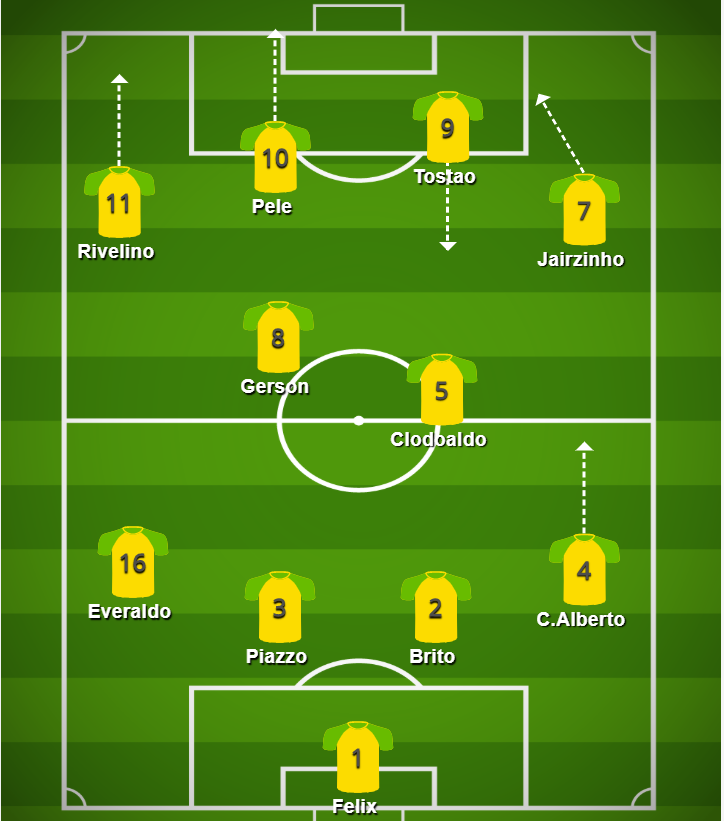“How Football Changed in Brazil
Related Articles How Football Changed in Brazil
How Football Changed in Brazil

Football, or futebol as it is passionately known, holds a place of unparalleled significance in the cultural and social fabric of Brazil. More than just a sport, it is a symbol of national identity, a source of collective pride, and a powerful unifying force that transcends social, economic, and racial divides. From the sandy beaches of Copacabana to the bustling favelas of São Paulo, the love for o jogo bonito (the beautiful game) permeates every corner of the nation.
However, the landscape of Brazilian football has undergone a dramatic transformation over the decades. What was once characterized by its artistry, improvisation, and individual brilliance has gradually evolved into a more structured, tactical, and globally influenced game. This article will explore the multifaceted ways in which football has changed in Brazil, examining the historical roots of the game, the key factors driving its evolution, and the implications for the future of Brazilian football.
A Historical Overview: From Amateurism to Professionalism
The introduction of football to Brazil can be traced back to the late 19th century, when Charles Miller, a Brazilian of Scottish descent, returned from his studies in England with a football and a set of rules. Initially, the sport was primarily played by the elite and upper classes, with exclusive clubs forming in major cities like São Paulo and Rio de Janeiro.
In the early 20th century, football began to spread beyond its elitist origins, gaining popularity among the working class and Afro-Brazilian communities. This period saw the emergence of iconic clubs like Flamengo, Vasco da Gama, and Corinthians, which embraced players from diverse backgrounds and played a crucial role in democratizing the sport.
The transition from amateurism to professionalism was a gradual process, marked by fierce debates and resistance from traditionalists who feared the commercialization of the game. However, the growing popularity of football and the increasing financial incentives led to the formal establishment of professional leagues in the 1930s. This marked a turning point in the history of Brazilian football, paving the way for greater organization, standardization, and competitiveness.
The Golden Era: Artistry, Improvisation, and Individual Brilliance
The mid-20th century is widely regarded as the golden era of Brazilian football, a period characterized by its unique style of play that emphasized artistry, improvisation, and individual brilliance. Players like Pelé, Garrincha, and Zico captivated audiences with their exceptional skill, creativity, and flair, embodying the spirit of ginga – a distinctive Brazilian style of movement that combines rhythm, agility, and unpredictability.
The Brazilian national team achieved unprecedented success during this era, winning three FIFA World Cup titles in 1958, 1962, and 1970. These triumphs not only solidified Brazil’s status as a global football powerhouse but also cemented the nation’s identity as the land of futebol. The 1970 World Cup victory, in particular, is remembered as a defining moment in Brazilian history, with the team’s dazzling performances and charismatic players becoming national heroes.
The Winds of Change: Globalization, Commercialization, and Tactical Evolution
In recent decades, Brazilian football has undergone a significant transformation, driven by the forces of globalization, commercialization, and tactical evolution. The increasing integration of the global football market has led to a mass exodus of Brazilian players to European leagues, where they are exposed to different styles of play, training methods, and tactical approaches.
This influx of foreign influences has had a profound impact on Brazilian football, leading to a gradual shift away from its traditional emphasis on individual brilliance and towards a more structured, tactical, and physically demanding game. Coaches and players have increasingly adopted European training methods, focusing on tactical discipline, defensive organization, and physical conditioning.
The commercialization of football has also played a significant role in shaping the modern game in Brazil. The rise of television broadcasting, sponsorship deals, and merchandising has generated vast amounts of revenue, transforming football into a multi-billion dollar industry. This has led to greater professionalization, with clubs investing heavily in infrastructure, player development, and marketing.
The Impact on Style of Play: From Ginga to Pragmatism
One of the most notable changes in Brazilian football has been the gradual decline of ginga and the rise of a more pragmatic and results-oriented style of play. While individual skill and creativity are still valued, coaches now prioritize tactical discipline, defensive solidity, and efficient use of possession.

This shift has been met with mixed reactions from fans and pundits, with some lamenting the loss of Brazil’s unique footballing identity and others arguing that it is a necessary adaptation to the demands of the modern game. Critics argue that the emphasis on tactical rigidity has stifled creativity and spontaneity, while proponents contend that it has made Brazilian football more competitive on the global stage.
The Challenges and Opportunities: Preserving Identity in a Globalized World
As Brazilian football continues to evolve, it faces a number of challenges and opportunities. One of the key challenges is to preserve its unique identity and cultural heritage in the face of increasing globalization and homogenization. This requires a concerted effort to promote and nurture the values of ginga, creativity, and individual expression, while also embracing the tactical and strategic advancements of the modern game.
Another challenge is to address the social and economic inequalities that continue to plague Brazilian society. Football has the power to unite people from all walks of life, but it can also exacerbate existing divisions if not managed properly. It is essential to ensure that football remains accessible to all, regardless of their social or economic background, and that it is used as a tool for social inclusion and empowerment.
Despite these challenges, Brazilian football also has a number of opportunities to capitalize on its rich history, passionate fan base, and abundant talent pool. By investing in youth development, improving infrastructure, and promoting ethical governance, Brazil can ensure that it remains a global football powerhouse for generations to come.
Conclusion: A Constant Evolution
Football in Brazil has undergone a remarkable transformation over the decades, shaped by a complex interplay of historical, social, economic, and cultural forces. From its elitist origins to its current status as a global phenomenon, Brazilian football has always been a reflection of the nation’s identity, aspirations, and struggles.
While the game has evolved in many ways, one thing remains constant: the unwavering passion and love for futebol that permeates every corner of Brazil. As Brazilian football continues to adapt to the challenges and opportunities of the modern era, it is essential to preserve its unique identity, promote social inclusion, and ensure that the beautiful game remains a source of pride and inspiration for generations to come. The evolution is ongoing, a testament to the dynamic and ever-changing nature of football in Brazil.

